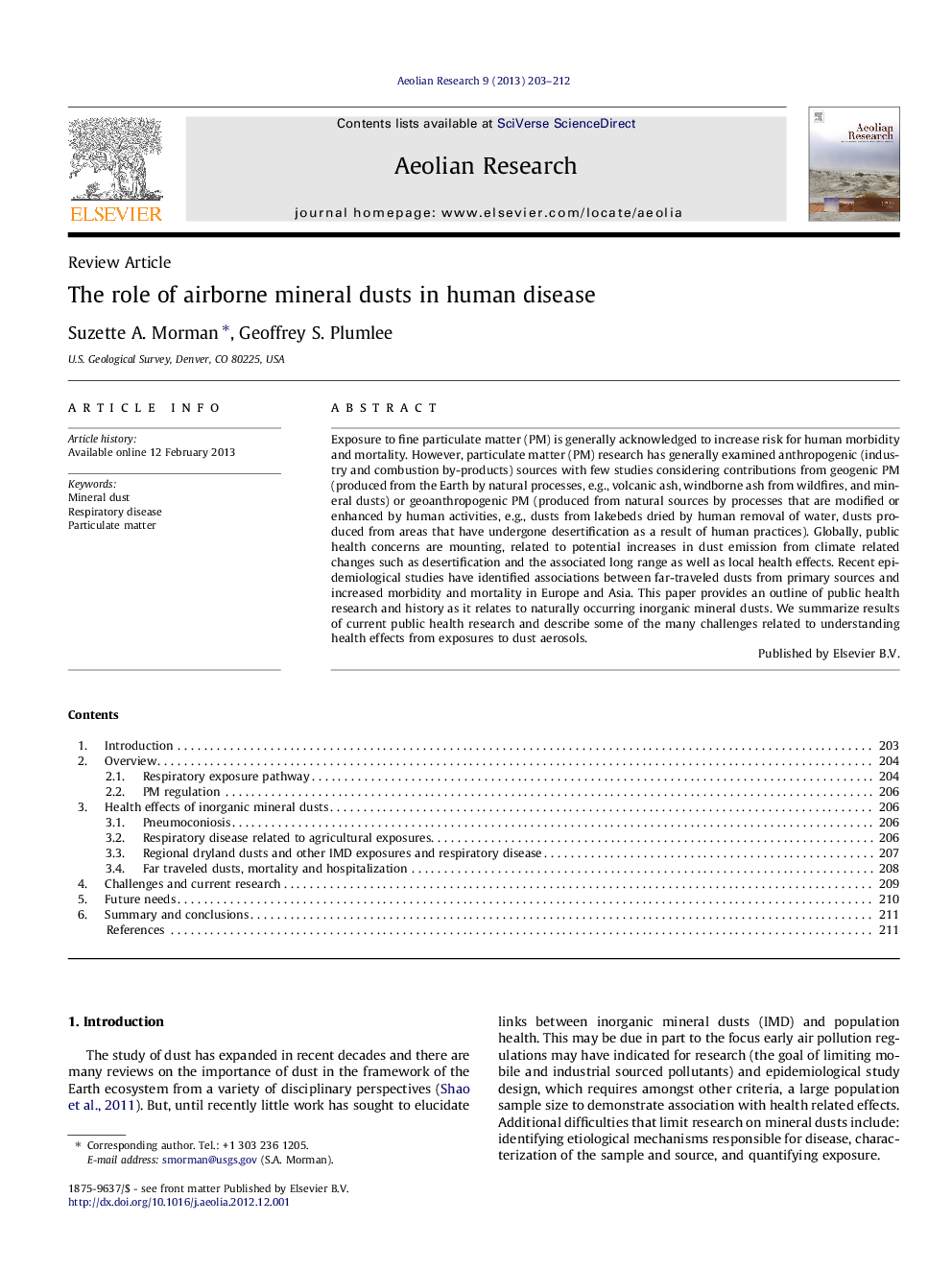| Article ID | Journal | Published Year | Pages | File Type |
|---|---|---|---|---|
| 4673847 | Aeolian Research | 2013 | 10 Pages |
Exposure to fine particulate matter (PM) is generally acknowledged to increase risk for human morbidity and mortality. However, particulate matter (PM) research has generally examined anthropogenic (industry and combustion by-products) sources with few studies considering contributions from geogenic PM (produced from the Earth by natural processes, e.g., volcanic ash, windborne ash from wildfires, and mineral dusts) or geoanthropogenic PM (produced from natural sources by processes that are modified or enhanced by human activities, e.g., dusts from lakebeds dried by human removal of water, dusts produced from areas that have undergone desertification as a result of human practices). Globally, public health concerns are mounting, related to potential increases in dust emission from climate related changes such as desertification and the associated long range as well as local health effects. Recent epidemiological studies have identified associations between far-traveled dusts from primary sources and increased morbidity and mortality in Europe and Asia. This paper provides an outline of public health research and history as it relates to naturally occurring inorganic mineral dusts. We summarize results of current public health research and describe some of the many challenges related to understanding health effects from exposures to dust aerosols.
► Provides an overview of public health research as it relates to inorganic mineral dust. ► Examines exposure and diseases associated with inorganic mineral dust. ► Reviews some of the complexities involved in identifying a specific etiology or cause. ► Offers suggestions for future research.
